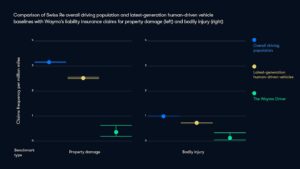How insurers can harness the power of data

In today’s environment, marked by sky-high inflation, market volatility and overall business complexity, insurers are working tirelessly to assess and manage new levels of risk. At the same time, the industry is navigating a wave of serious change. The pandemic forced insurers to overhaul their operating models for a digital world. A rise in devastating wildfires and climate-driven events have led to major shifts in regulations. Plus, insurers must prepare to achieve IFRS 17 compliance, the biggest transition the industry has seen over the last decade.
With complex change happening at a faster clip than ever before, data is now black gold for insurers. But properly harnessing the power of data – as opposed to just drowning in it – presents yet another challenge for the industry.
Out with the old, in with the data
With billions of connected devices producing zettabytes of data, the rise of the Internet of Things has led to a true data explosion. As with many industries, this abundance of data presents immense opportunity for insurers. Real-time data can provide valuable insights on more tailored services, optimized pricing, customer behaviors and experiences, and can present insurers with new opportunities to minimize risk.
As insurers navigate the complex change happening in their industry, the ability to capitalize on data will quickly become a competitive differentiator. But, getting the most out of the data available today requires true digital transformation – a mix of digital tools, systems, and processes, combined with the right resources to manage all three. Meaning, to combat external change, insurers must first get comfortable with internal change.
What does this process look like? For many insurers this will mean getting rid of legacy systems and accelerating the adoption of tools that make it easier for insurers to tap into data – from opportunities in the cloud, to rolling out new digital-first experiences for customers. While sticking with the status quo might feel like a safe bet, the truth is, legacy systems often weigh down data quality, availability, and connectivity. Instead, embracing a digital-first approach can deliver process automation, drive seamless collaboration and visibility, and help insurers tap into real-time data – from customers, markets, and third parties.
A new customer experience
Beyond this internal transition getting the most of data is all about what you do with the insights available to you. For insurers, enhancing the customer experience is another area where data, if handled properly, presents the greatest opportunity.
Between lockdowns and social distancing guidelines, the pandemic drove most insurers to completely re-invent their operating models. With in-person activities now limited, insurers – who rely on strong customer relationships – have had to work twice as hard to maintain customer connections in a remote-first environment. That’s where data comes into play.
Beyond maintaining service levels in a mostly virtual world, data can help insurers identify opportunities to enhance the customer experience and ultimately improve customer loyalty. With customer data from a variety of sources and channels – from digital agents and brokers to online surveys and portals – insurers can manage real-time engagements and get a better sense of current customer sentiment and behaviors. How are customers interacting with you? What shifts are they seeing in their business and how is this impacting their needs? What incentives are they most interested in today? Data can help insurers unlock the answers to these questions and more – making it easier to customize solutions, tools, and products to fit your ideal customer. This data can also unlock information on products to be insured, which can help insurers mitigate risk and become stronger long-term partners to their customers.
At the end of the day, customers are looking for fast, reliable, personalized, and frictionless service. But without access to customer insights, insurers might miss out on opportunities to roll out new experiences, address shared concerns, or capture new relationships. And with inflation and climate-related events sure to impact customers in the coming months, data will be key in helping insurers meet their changing wants, needs, and behaviors.
A digital future
There’s no question that data has become a competitive differentiator in the insurance industry. Whether in distribution, actuary, accounting, underwriting, or operations, insurers that can capture the power of data will be able to identify and seize new opportunities, even in the face of macroeconomic uncertainty and industry change.
But tapping into the power of data requires a shift in mindset. If insurers can transition away from the traditional way of thinking and operating, and embrace tools, systems, and processes that promote a digital-first culture, they can ask and answer the questions that will define the future of the industry, like: How will rising inflation impact my financials next quarter? Does the current environment impact our transition plan for IFRS 17? What would be the impact of continued political unrest on our contact center activity? How has remote work impacted the cost and distribution of our insurance policies?
From there, insurers can leverage data, and their digital models, to execute insights-driven strategies, shorten reaction times, and become lifetime partners to new and existing customers.



